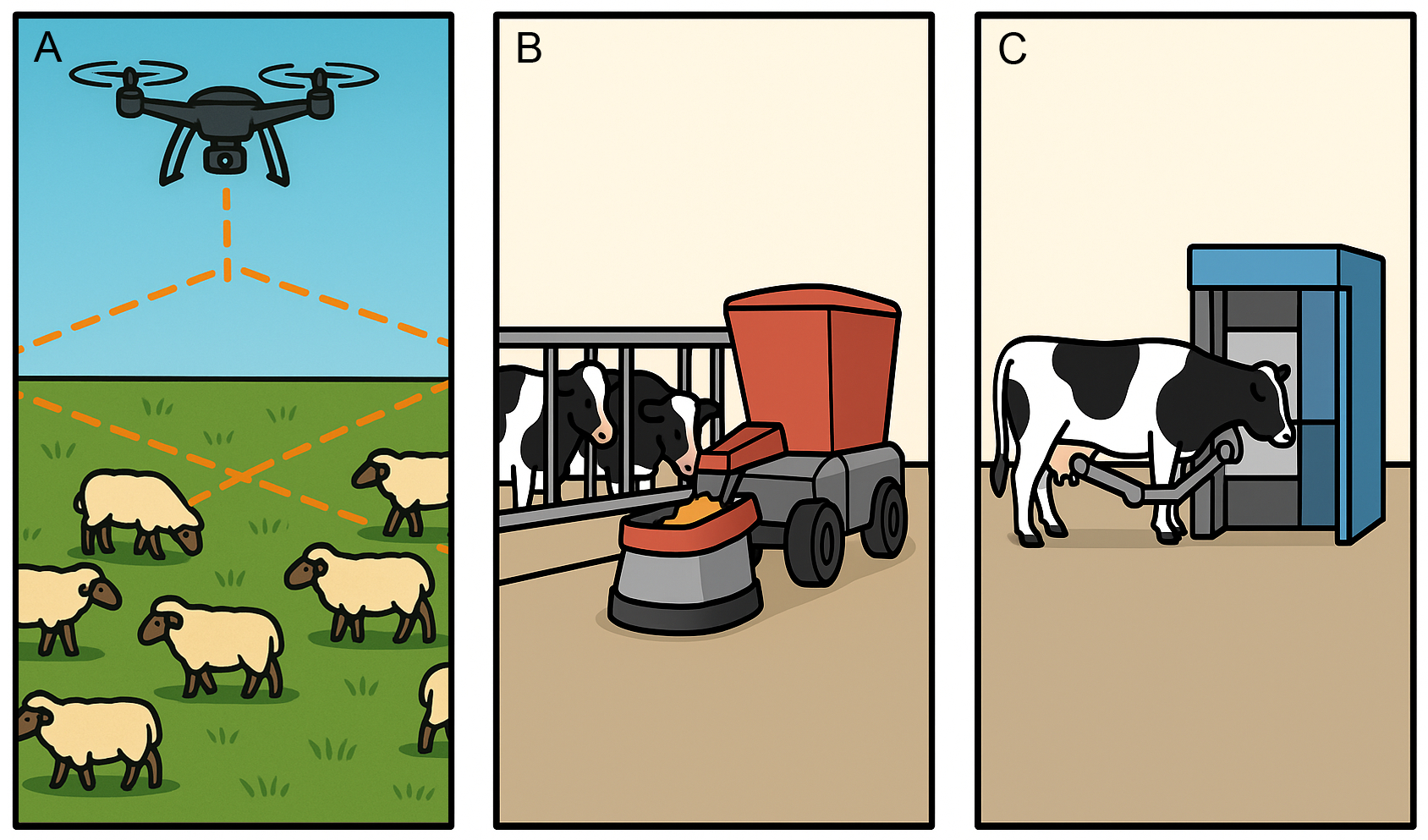A new book titled “Sustainable Animal Agriculture – Global Challenges and Practical Solutions” is being published by the London-based publisher IntechOpen. In response to the honorable request, our colleagues contributed to the book by preparing a chapter on green agricultural technologies and sustainable analytical methods, presenting the latest trends. The book chapter, published in the summer of 2025, can be downloaded for free from the publisher’s website.
Applications of Green Agricultural Technologies (GAT) and Sustainable Analytical Methods (SAM) in Precision Animal Agriculture and Product Quality Testing
Haruna Gado Yakubu, George Bazar and Tamas Toth
Modern agricultural development is primarily based on applying environmentally friendly and efficient technologies to deliver farm productivity. This chapter examines the advancements made in green agricultural technologies (GAT) and sustainable analytical methods (SAM) for precision animal production systems. The application of Unmanned aerial vehicles (UAV) enables real-time monitoring of pasture fields, animal behaviour and health. The application of NIR in the dairy industry has revolutionised feed and milk quality analyses, by providing real-time, accurate and precise nutritive and quality feedback. Smart feeding and milking have ensured efficient feeding and milking of a large number of animals within short periods. These technologies have significantly improved the efficiency of livestock production systems, enhanced ecosystem integrity, reduced drudgery, improved animal welfare and physiological conditions, and increased farmer income. Notwithstanding, the complexities involved in the application of some of the technologies and the high cost of almost all of them are hindering their adoption in low-income countries. Stakeholders and policymakers must collaborate effectively to make these technologies affordable in low-income countries, thereby enhancing precision livestock agriculture worldwide. On the other hand, where GAT and SAM are available, many expect a self-evident agricultural revolution simply to be an investment. Professionals, however, must understand that all new technologies and methods also require knowledge and experience in application, not only in development. Currently, most of the portable technologies are operational in offline mode, while others require network connectivity (online) for efficient operation. Manufacturers and users must consistently review the performance of these technologies for the effective design and development of future generations of the devices.

Access the full chapter free of charge on the website of the publisher:
